Dog Bathing 101: When, How, and Why You’re Doing It Wrong
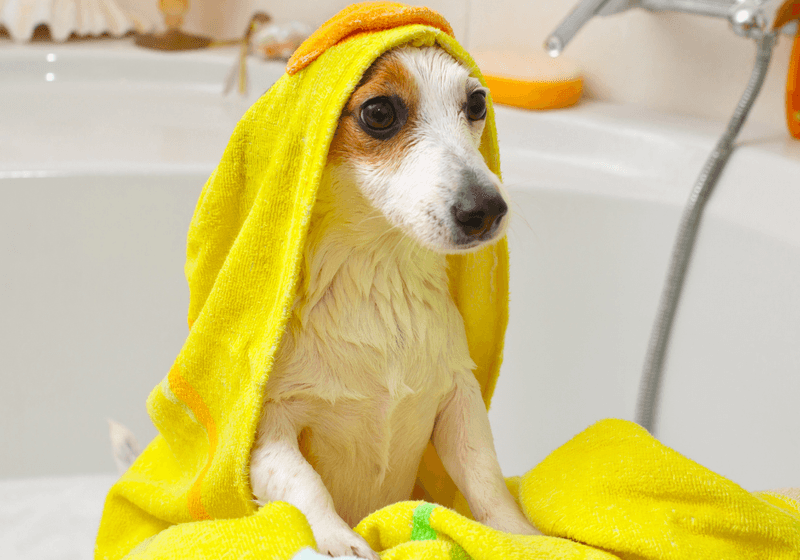
Bathing your furry friend seems simple enough, but many pet parents make mistakes that can lead to skin problems or a stressed-out pup. Getting your dog clean isn’t just about jumping into the tub whenever they smell funky.
There’s actually a science to proper dog bathing that considers their unique coat, skin needs, and comfort level.
Let’s explore the common mistakes you might be making and how to turn bath time from a dreaded chore into a positive bonding experience.
1. Know Your Dog’s Coat Type

Different dog breeds have vastly different bathing needs. A Labrador’s water-resistant coat requires less frequent washing than a Poodle’s curly fur that traps dirt and debris.
Short-haired breeds might need bathing just once every three months, while longer-haired pups benefit from monthly baths. Your dog’s natural oils are crucial for skin health. Washing too frequently strips these protective oils, causing dryness and irritation.
Double-coated breeds like Huskies have special requirements – their undercoat helps regulate temperature and shouldn’t be shampooed excessively.
Research your specific breed’s needs or ask your veterinarian for personalized advice. The right bathing schedule maintains your dog’s coat shine while preventing skin problems.
2. Consider Lifestyle and Activity Level
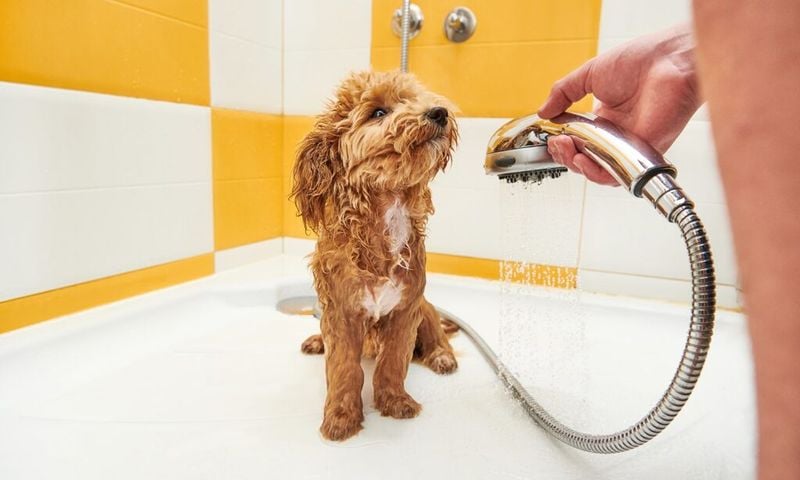
Your adventure-loving mud enthusiast needs a different bathing schedule than a couch-dwelling cuddle expert. Dogs who regularly hike, swim, or roll in questionable substances naturally require more frequent baths than indoor pups who rarely get dirty.
Seasonal changes matter too. Summer months often mean more outdoor play, increasing the need for bathing. However, winter bathing requires extra care since dogs are more susceptible to chills after getting wet. Pay attention to your dog’s specific activities.
A weekend at the beach means sand and salt need washing away, while a romp through muddy trails requires immediate attention to prevent matting and skin irritation.
3. Watch for Skin Conditions or Allergies

Many owners unknowingly worsen skin problems with improper bathing. Red, flaky skin, excessive scratching, or a dull coat signals something’s wrong with your current routine.
These symptoms might indicate allergies to ingredients in your shampoo or environmental triggers that require special bathing care.
Dogs with diagnosed skin conditions like dermatitis or hot spots need medicated shampoos prescribed by veterinarians. These specialized formulas target specific issues while being gentle on irritated skin.
Regular shampoos can actually worsen these conditions. Monitor your dog’s reaction after each bath. If irritation appears within 24-48 hours, document it and consult your vet.
Switching to hypoallergenic, fragrance-free products often helps sensitive pups enjoy bath time without uncomfortable aftermath.
4. Don’t Overdo It

Surprisingly, most dog owners bathe their pets too frequently. Unlike humans who need daily showers, dogs naturally regulate their skin oils. Excessive bathing disrupts this balance, leading to dry, itchy skin and potential infections.
Even the smelliest dogs rarely need baths more than once a month. Spot cleaning is your secret weapon between full baths. Keep pet wipes handy for muddy paws or dirty bellies after walks.
For localized messes, wash just the affected area rather than subjecting your dog to a complete bath. Brushing regularly removes loose fur, distributes natural oils, and keeps your dog cleaner between baths.
This simple routine reduces bathing frequency while maintaining a healthy, odor-controlled coat.
5. Use Dog-Specific Products
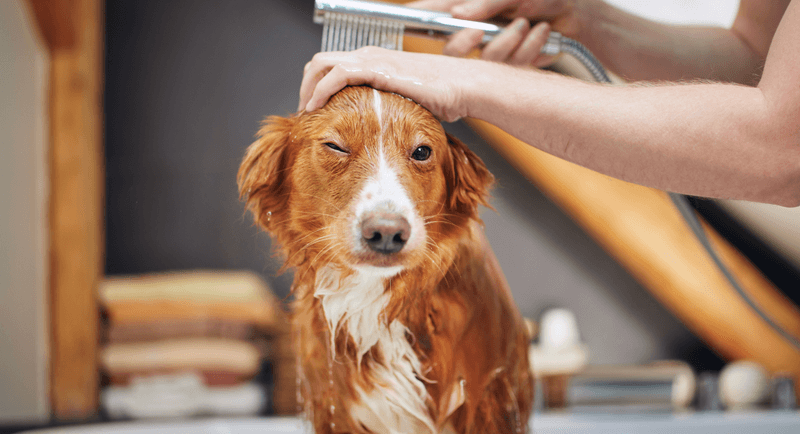
Human shampoo is a big no-no for furry friends! Dogs’ skin has a different pH level than ours, making human products too harsh and irritating. That bottle of Pantene might leave your hair silky, but it strips your dog’s protective skin barrier, causing dryness and irritation.
Quality matters when selecting dog shampoos. Bargain brands often contain harsh detergents and artificial fragrances that trigger allergic reactions. Look for products with natural ingredients like oatmeal, aloe vera, or chamomile that soothe while cleaning.
Conditioners aren’t just for humans either. Dog-specific conditioners help detangle, moisturize, and protect the coat, especially for long-haired breeds prone to matting. They restore moisture that shampoo removes during cleaning.
6. Brush Before and After the Bath
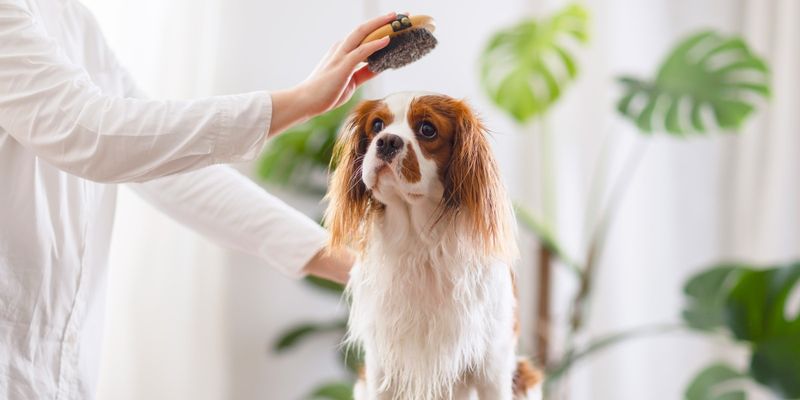
Pre-bath brushing removes loose fur and untangles mats that would otherwise become worse when wet. This simple step prevents painful knots from forming and helps shampoo reach the skin more effectively.
For double-coated breeds, it removes loose undercoat that would otherwise clog your drain. Many owners skip post-bath brushing, but it’s equally crucial. Wet fur tangles more easily, and brushing while drying helps prevent painful mats from forming.
It also distributes natural oils throughout the coat for maximum shine and health. Different coat types require specific brushes. Slicker brushes work for curly or long coats, while rubber curry brushes suit short-haired breeds.
Investing in the right tools makes the entire bathing process smoother for both you and your pup.
7. Make Bath Time Positive
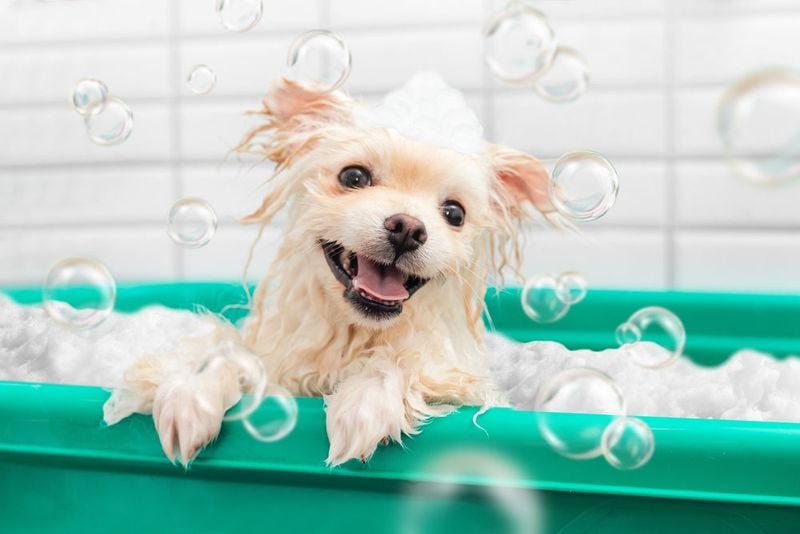
Your anxiety transfers directly to your dog during bath time. Many owners approach bathing with dread, which dogs immediately sense and mirror.
Creating a calm, positive atmosphere with a gentle voice and plenty of praise helps nervous dogs feel secure. Preparation prevents panic. Gather all supplies before bringing your dog to the bathing area.
Non-slip mats provide secure footing, preventing fear from slipping. Room-temperature water feels comfortable, while too hot or cold causes stress. Rewards work wonders for bath-phobic pups.
Treat breaks during the process reinforce good behavior. Special toys reserved only for bath time create positive associations. With consistency and patience, even the most bath-resistant dog can learn to tolerate – or even enjoy – getting clean.






